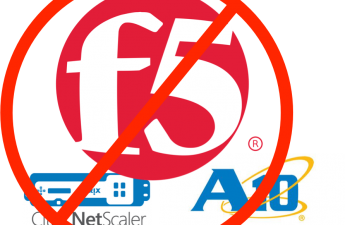This entry will be another fairly quick one. In the previous entry regarding the server, routing, etc, I described how I had to work around the fact that FRR didn’t honor FreeBSD’s assigning and deletion of IP addresses from interfaces. Specifically: I had the line redistribute connected in the server’s BGP configuration. That means any of the server’s interfaces with…
Category: FreeBSD
Server Merge, ZFS Fun, and BGP Routing For Jails
[toc] Introduction About five years ago, I built two new servers in my basement, as outlined here and here. One server was my general login/mail/web/DNS/etc server, and the other my home NAS. This entry will document and detail my merging of the two servers into one, and the associated challenges that brought with it. I also took this opportunity to…
Running FRR On Home Router
[toc] Introduction I’ve been building up my Cumulus Linux and FreeBSD virtual network over the course of the last several months. As you’ll recall from an earlier post, I decided to put a single aggregation router at the top of the network as an ingress and egress point. This allowed me to put a single static route for the entire…
Final Health Checking Script
This is going to be a reasonably short and quick entry. Last week I went through the process of demonstrating using BGP Anycast on a server in place of a load balancer. The follow-up post described the health-checking script that I wrote in python to check whether the server was healthy or not. That health-checking script would then inject the…
Adding More ECMP and Health Checking To Anycast Lab
[toc] Introduction In yesterday’s Load Balancers Be Damned post, I demonstrated how adding Free Range Routing to servers could provide a way to do anycast load balancing without the need for expensive load balancers in some cases. What I didn’t really demonstrate well was the ECMP capabilities of the leaf nodes. I also punted on the required local health checking…
Load Balancers Be Damned: Routing On The Server
[toc] Introduction Companies such as F5, A10, and Netscaler (owned by Citrix) have built their respective businesses on the need for load balancing devices in the data center and other parts of the network. While these devices can make the sharing of the load of incoming service connections (eg: HTTP, DNS, etc) very easy, they also come with a sometimes…
Cumulus VX on FreeBSD’s BHyve
[toc] Introduction Over the course of the last few weeks or so, I’ve been working with Cumulus Linux’s VX image on VirtualBox, on my Macbook Pro. As my virtual lab grew from a few VX images to the count of ten or so, my laptop began to complain. My laptop has a 4-core 2.8Ghz Core i7 with 16GB of RAM. …
Using FreeBSD to Stream to YouTube and Twitch
[toc] Introduction In a previous entry I discussed the differences in streaming game play to YouTube vs Twitch, as well as the differences between using hardware versus software h.264 encoding. The conclusion that I came to was that I was going to continue streaming to my YouTube channel until I decide to buy and assemble another PC specifically for Twitch…
Blocking Spammers at the Router: IPFWMTAD
[toc] Assuming you’ve followed my spam-fighting adventures, you’ll know that I have a fairly successful installation of Neal Horman’s spamilter running in a FreeBSD jail, and his ipfwmtad daemon running on the jail’s host. Meaning the ipfw rules being added by ipfwmtad are done on a server different from where spamilter is running. Along with all of that, you’ll recall…
FreeBSD Jails: Filesystems and FIBs
[toc] In my Putting Jails to Work entry, I detailed how I set up the jails on joker. Part of that entry dealt with the null filesystem mounts that I had to do on joker so that the jails would have access to an NFS-mounted filesystem. It turns out that I did a lot more work than was necessary, because the…

